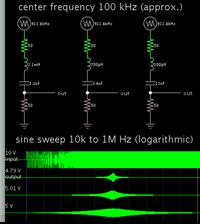Andrew_it
Newbie level 6
Hi everyone,
I have to design a fifth order passive filter for my circuit, but I'm a little newbie in that matter.
I know well the classic RLC circuit and higher order but ACTIVE filter.
Can someone recommend me some software tools, documentation or something like that to design the filter?
I hope for your support,
Andrea
I have to design a fifth order passive filter for my circuit, but I'm a little newbie in that matter.
I know well the classic RLC circuit and higher order but ACTIVE filter.
Can someone recommend me some software tools, documentation or something like that to design the filter?
I hope for your support,
Andrea
